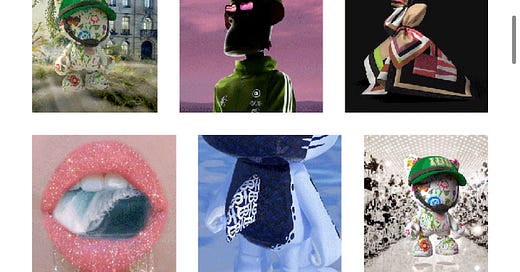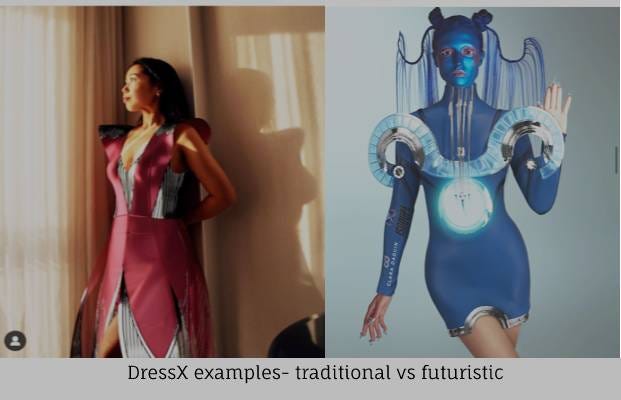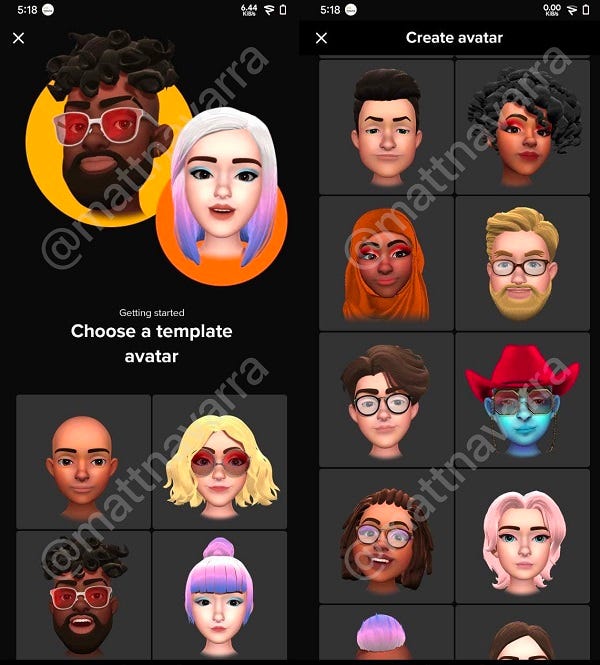Can an Avatar have cellulite? And how does that affect consumer tribalism in the metaverse?
An announcement regarding peak NFT mania coming soon.
Does the speed of NFT adoption signify anything? The buzz is deafening. Fashion week was full of examples of NFTs and metaverse activations. Some cool. Some noteworthy. Many neither. Vogue business has an NFT tracker. And it made me ask, at what point did we stop tracking interesting influencer activations on Instagram?
Very few brands seem to discuss these efforts in marketing terms. Acquisition. Brand awareness. Maybe those earthly desires are too banal. But most of the press covering these activations is trade and business press (BoF, Vogue Business, FT)… So what's the appetite for hype, and what’s the appetite for case studies?
When will we reach peak Web3 mania? When the noise has died down, and we can evaluate these channels more concretely? I’ll be launching something neat in this space in March. Stay tuned…
But now, onto consumer identity in the metaverse.
You no longer have to select a gender in Roblox, thanks to community demands.
Mark Zuckerberg in the metaverse dresses exactly like Mark Zuckerberg IRL.
Brand identity tells a consumer why to buy something. What’s the history? How should it make you feel? Who will you be if you own this bag-shoe-dress-lipstick? Also, utility but forget that for now (Fortnite and other gaming accessories aside). We covered brand identity and extension last week with Adidas and BAYC and Prada and and and…
Consumer identity is who you want the world to think you are. Your tribal identity. Passive or active representation of your place in our consumer society.
Practically your identity tells marketers what you might be interested in buying. By removing all earthly concerns, we get to the purest form of identity. Your avatar apparel choices are only there to define yourself to your metaverse peers. Anything is possible. But this shift leaves marketers without the indicative signals they use to segment customers (into their tribes or not) and drive IRL purchases. Uh oh.
Fashion IS identity in the metaverse. You can have, at this point, no back story. The moment you enter Decentraland or the Sandbox, you can be anyone you want. So everything you are is what you are in that moment. The most salient and expressive identity device is your physical appearance. Since you can now rent clothes on DressX, the cost to change this identity is almost zero, not only to you but to the environment.
For many people, their body plays a role in what they choose to wear, from choosing something they deem flattering to finding something in their size. Is there flattering in the metaverse? There is certainly no issue with body type if you don’t want there to be. You can just change your avatar’s shape or not care. Because there aren’t avatars with cellulite (yet?).
The result? An identity totally removed from real-world demands. So who will we be when we can be anything at all?
If we consider the creator economy aspect of the metaverse, this will continue to lead to a rise of custom and couture for those who want to take this to its furthest limit, the most creative. That might be fantastical feathered unicorn sparkly space blobs. Or it might be clothes and bodies that look a lot like what we’re used to. Probably a bit of both.
But for the rest of us. The metaverse middle class, as Fast Company called it. All of the same rules still apply. How does a brand identity translate to the metaverse so that it maintains the correct signals to consumers? Luckily, brands can be so much more prescriptive about who they are and represent in the metaverse. Brand activations can take place anywhere with anyone. And precisely aligned to the visual experience the brand wants. Every brand will now get to do what Karl Lagerfeld did for Chanel each season, create an immersive, wonderful, sometimes wacky, representation of what he wanted to convey.
Let’s extend (or maybe I mean retract?) this idea into the realm of social media. On one hand, profile pics are the new conspicuous consumption; the very expensive and very visible Bored Apes are the Lamborghinis of the crypto set. Just ask the Wall Street Journal. For most people, a profile pic, even if it does come with exclusive club membership, is not the only thing that defines their identity. This PFP identity might be a part they are highlighting, but generally social media identities are somewhat tied to IRL identities and thus are less transitory. So this BAYC PFP is much like any luxury accessory, a casual flex.
On the other hand, social media is making the metaverse more like IRL, like TikTok’s new avatar feature that will enable users to create a digital character avatar based on a selfie, with facial expressions that will match your actual look.(h/t @mattnavarra) The more things change….
What does this mean for brands - as usual, mostly questions, few answers
Your opportunity for strengthening your brand identity and authenticity in the metaverse/Web3 space is massive
BUT the power of the creator economy and the untethering of reality means there’s an opportunity for tribes to override what you think your brand identity is.
Who will be the fast-fashion-type players in the metaverse? Beyond NFTs, who’s to say who owns one similar design versus another?
Consumer preferences will be more confusing - you can’t infer as much about real-world identity (and thus advertising) as you can from IRL purchases.
There’s clearly a demand for visual representation that is fantastical in the fashion space, but this doesn’t appear to extend so much to avatars.
NFTs are the ultimate conspicuous consumption, will be required for people who are trying to show off their tribe
The dark side of tribalism is exclusion. Already there are people who don’t feel welcome in the metaverse or in certain NFT communities. What will brands do about this?
Will we see geographic differences persist?






